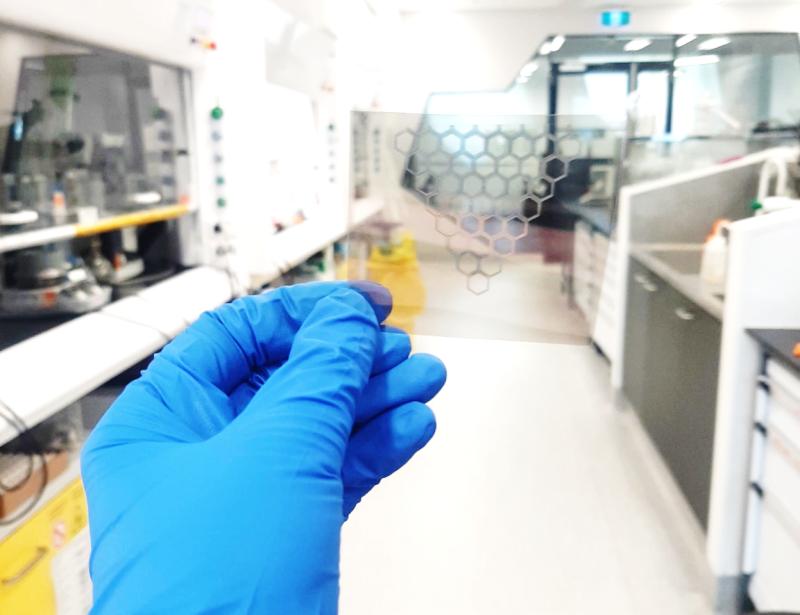Australian printed electronics startup Syenta has raised AU$ 3.7 million ($2.5 million) in a seed funding round to accelerate the production of its multi-material 3D printers that allow customers to access highly complex and functional electronics like semiconductors, batteries, and sensors. The investment round was led by Australasian venture capital firm Blackbird, which recently spearheaded an AU$ 35 million ($23.8 million) funding round for local bioprinting startup Inventia Life Science. Other investors include Sydney-based tech startup investment firms Jelix Ventures and Brindabella Capital.
An Australian National University (ANU) spinoff and Canberra Innovation Network (CBRIN) co-working alumni, Syenta’s mission is to democratize electronics manufacturing. Operating in stealth mode since 2020, Syenta – which recently changed its name from Spark3D – originally developed a unique electrochemical 3D printer to fabricate polymer, semiconductor, or metallic structures – all within a single device.
The company’s main product, called MicroFab, can be used to print 3D electronics out of copper at a resolution and speed that does not yet exist and could be a game changer for critical technologies like solar cells, printed circuit boards (PCB), and antennae. Syenta is building a simple version of the printer for an initial market of customers while addressing the key technical risks of the ultimate product version, which, if wildly successful, has the chance to reshape the way semiconductors are manufactured.
Built as a small device that can fit on a coffee table, MicroFab is expected to allow customers to fabricate and iterate in-house rapidly. Even more so, according to the startup, the printer and ink costs are low and scalable compared with the prohibitively expensive current inkjet PCB printers that dominate the market.
 Syenta co-founders Jekaterina Viktorova and Luke Connal at the Australian National University. Image courtesy of Blackbird.
Syenta co-founders Jekaterina Viktorova and Luke Connal at the Australian National University. Image courtesy of Blackbird.Aiming to transform electronics manufacturing, the venture business is the dream of ANU doctoral student Jekaterina Viktorova and ANU Chemistry Professor Luke Connal. Initially, the co-founders set out to develop a multi-material approach to printed electronics that not only improves the efficiency and sustainability of the electronics industry but also reduces costs and increases speed. Their dream has now turned into a multi-million dollar-backed startup.
By printing with electrochemistry and using a purely additive method, the technology has the potential to reshape both how renewable technologies are manufactured and their actual performance. The company also states that its device reduces the amount of energy and materials that go into producing electronics, making it highly efficient and sustainable.
Throughout 2022, Syenta has worked with interns from ANU’s College of Engineering, Computing and Cybernetics to improve its product. During this time, Professor Connal has also presented Syenta’s printer at different university seminars where he outlined the technical challenges and benefits of the system and even demonstrated multi-material printing from metals, semiconductors, conducting polymers, and insulators. In December 2021, the MicroFab machine could print with a resolution of 25 microns and demonstrated how the technology could compete with vapor phase deposition and inkjet techniques to create functional devices.
With potential applications not just in additive manufacturing and printed electronics but also in the prototyping of electronic devices, biomedical devices and implants, IoT sensors, organic light emitting diodes (OLEDs), research, space, defense, and automotive industries, it’s easy to imagine that this new technology holds a lot of promise to a wide range of sectors. Furthermore, once commercialized, this 3D printer could expand the scope of materials that can be printed using a single device, reducing the number of pre-and post-processing steps that are necessary for manufacturing.
In the last two years, Connal has also described other benefits arising from the technology, including high-resolution printing, custom designs, and IP protection – thanks to its ability to print on-site.
 Syenta’s new method for printed electronics. Image courtesy of Syenta via LinkedIn.
Syenta’s new method for printed electronics. Image courtesy of Syenta via LinkedIn.Syenta’s AU$ 3.7 million seed round will also help grow the startup’s workforce and give the team the capital to prove key technical milestones around their nano-scale product. According to Blackbird, there are two critical longer-term doubts Syenta hopes to overcome. First, they want to determine whether printing in nano rather than micrometers is an option. Another case in point is whether printing can be done in parallel with many print heads or via a dramatically different architecture. The company already has customers and is drawing up a shortlist for its printers. Syenta plans to learn about the end markets in the coming years, like interconnects between chiplets, sensors, and beamforming antennas.
Subscribe to Our Email Newsletter
Stay up-to-date on all the latest news from the 3D printing industry and receive information and offers from third party vendors.
Print Services
Upload your 3D Models and get them printed quickly and efficiently.
You May Also Like
XJet Sells Metal 3D Printer to Mold Maker, Deepens Partnership with Youngstown Business Incubator
Back in 2017, XJet, the Israel-based original equipment manufacturer (OEM) of metal and ceramic additive manufacturing (AM) systems, sold its first machine in the North American market, a Carmel 1400C...
Croom Medical Signals Potential for 3D Print Diversification in Nuclear Fusion
As international interest in reshoring continues to mount, the additive manufacturing (AM) industry clearly has key advantages to offer suppliers scrambling to develop alternatives to traditional supply chains. One of...
From Concept to Reality: Nikon AM CEO Hamid Zarringhalam on Executing a Metal 3D Printing Strategy
There are countless metrics you can use, whether quantitative or qualitative, to judge the success of an organization. One of the most important may simply be the organization’s ability to...
Havaianas Collaborates with Zellerfeld to Launch 3D Printed Flip-Flops
The shoe of the summer is undoubtedly the flip-flop. Easy on, easy off, your feet won’t get sweaty because there’s not much material, and they’re available in a veritable rainbow...
































